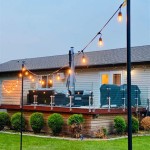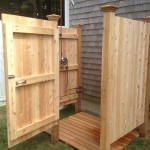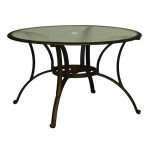Outdoor Victorian Style Lamp Posts: An Enduring Legacy of Illumination and Elegance
Outdoor Victorian style lamp posts evoke a sense of timeless grace and old-world charm, serving as more than just sources of light. They represent a connection to a bygone era, a period characterized by intricate design, robust craftsmanship, and a commitment to aesthetic beauty. These lamp posts, often crafted from durable materials and adorned with ornate details, offer a unique way to enhance landscapes, gardens, and streetscapes, blending functionality with a distinct architectural flair.
The Victorian era, spanning from 1837 to 1901, witnessed significant advancements in technology and manufacturing, which profoundly impacted the design and production of outdoor lighting. Gas lighting, which had gained prominence in the early 19th century, continued to evolve, inspiring the designs that would later be adapted for electric lighting. As electricity became more accessible, lamp posts transitioned from gas to electric, but the Victorian aesthetic remained influential. This enduring legacy is evident in the ornate castings, elaborate scrolls, and elegant curves that define the Victorian style lamp post.
The appeal of Victorian lamp posts lies in their ability to transform ordinary spaces into visually appealing environments. Whether illuminating a private garden, lining a residential street, or accentuating a commercial property, these lamp posts create a welcoming atmosphere. Their inherent beauty complements a variety of architectural styles, adding a touch of sophistication and historical significance.
Key Features of Victorian Lamp Post Design
Victorian lamp posts are distinguished by several key features that collectively contribute to their distinctive appearance. Understanding these elements helps in appreciating the craftsmanship and historical context behind these iconic luminaires. These features also significantly impact the selection process, ensuring the chosen lamp post aligns perfectly with the intended setting and design scheme.
One of the most prominent features of Victorian lamp posts is the intricate ornamentation. Elaborate castings featuring floral motifs, scrolls, and geometric patterns are common. These ornate details are typically found on the base, the shaft, and the lantern of the lamp post, adding depth and visual interest. The castings are often made of durable materials like cast iron or aluminum, ensuring longevity and resistance to weathering.
The lantern, or the light-emitting component, is another defining feature. Victorian lantern designs vary, but they often incorporate multiple panes of glass, typically clear or seeded, set within a decorative metal frame. The shape of the lantern can range from simple square or rectangular designs to more elaborate hexagonal or octagonal structures. The glass panes allow for ample light diffusion while adding to the overall aesthetic appeal.
The height and proportional dimensions of a Victorian lamp post are also crucial design considerations. Historically, lamp posts were built to a height that would effectively illuminate the surrounding area without being overpowering. The height is usually proportionate to the size of the lantern and the thickness of the shaft. This careful attention to proportion contributes to the lamp post's elegant and balanced appearance.
Materials and Construction of Victorian Lamp Posts
The durability and longevity of Victorian lamp posts are largely dependent on the materials used in their construction. The selection of appropriate materials, coupled with sound construction techniques, ensures that these lamp posts can withstand the elements and maintain their aesthetic appeal for years to come. The choice of material also contributes to the authenticity of the Victorian design.
Cast iron has traditionally been a popular choice for Victorian lamp posts due to its strength, durability, and ability to be molded into intricate shapes. Cast iron lamp posts are known for their robust nature and resistance to corrosion, especially when properly coated and maintained. The weight of cast iron also provides stability, making it ideal for outdoor installations.
Aluminum is a lightweight alternative to cast iron that offers similar aesthetic possibilities. Aluminum lamp posts are resistant to rust and corrosion, making them a suitable option for coastal regions or areas with high humidity. The lighter weight of aluminum also simplifies installation and reduces transportation costs. Moreover, aluminum lamp posts can be powder-coated in a variety of colors to match specific design preferences.
The glass used in the lantern is another important material consideration. Tempered glass or polycarbonate are often used to enhance safety and durability. Tempered glass is resistant to shattering, while polycarbonate is virtually unbreakable, making both materials ideal for outdoor applications where impact resistance is essential. Seeded glass, which contains small bubbles, is another popular choice for Victorian lanterns as it adds a touch of vintage charm and diffuses the light softly.
The construction of Victorian lamp posts typically involves several stages, including casting, welding, and finishing. The metal components are often cast in molds to achieve the desired shape and ornamentation. The different parts are then welded together to form the complete lamp post structure. The finished product is typically coated with a protective layer of paint or powder coating to enhance its resistance to corrosion and weathering. The final step involves installing the electrical components and the lantern, ensuring that the lamp post functions safely and effectively.
Selecting and Installing Victorian Style Lamp Posts
Choosing the right Victorian style lamp post necessitates careful consideration of various factors, including the architectural context, the intended use, and the desired aesthetic. A thoughtful selection process ensures that the lamp post complements the surrounding environment and provides adequate illumination. Proper installation is equally important to ensure the lamp post's stability, safety, and longevity.
Before selecting a Victorian lamp post, it is essential to assess the architectural style of the surrounding buildings and landscapes. Consider the existing colors, materials, and design elements to ensure that the lamp post harmonizes with the overall aesthetic. For example, if the property features intricate detailing, a lamp post with equally elaborate ornamentation would be a fitting choice. If the property is more modern or minimalist, a simpler Victorian style lamp post with cleaner lines might be more appropriate.
The intended use of the lamp post is another crucial factor to consider. Determine the primary purpose of the lamp post – whether it is to provide general illumination, highlight architectural features, or enhance the ambiance of a garden or patio. Consider the desired light output and distribution to ensure that the lamp post provides adequate lighting for the intended purpose. LED bulbs are often a preferred choice for Victorian lamp posts due to their energy efficiency, long lifespan, and ability to mimic the warm glow of traditional gas lamps.
Proper installation is essential for the stability and safety of the lamp post. The installation process typically involves digging a hole, setting the lamp post in concrete, and connecting the electrical wiring. It is important to consult with a qualified electrician to ensure that the wiring is installed correctly and meets all applicable safety codes. The lamp post should be anchored securely in the ground to prevent it from tipping over in windy conditions. The base of the lamp post should also be protected from moisture and corrosion to extend its lifespan.
The spacing of Victorian lamp posts also warrants careful consideration. The distance between lamp posts should be determined based on the desired level of illumination and the width of the area being lit. Too few lamp posts may result in inadequate lighting, while too many lamp posts may create an overly bright or cluttered appearance. Experimenting with different spacing arrangements can help achieve the optimal balance between illumination and aesthetics.
Finally, ongoing maintenance is essential to keep Victorian lamp posts looking their best and functioning properly. Regular cleaning is necessary to remove dirt, dust, and debris that can accumulate on the lamp post and lantern. Check the electrical wiring periodically to ensure that it is in good condition. Replace any damaged glass or metal components promptly to prevent further deterioration. By following these simple maintenance tips, one can ensure that the Victorian lamp posts continue to provide illumination and elegance for many years to come.

Solar Powered Victorian Style Lamp Post 200 Lumen Led Outdoor Garden Light With 365 Day Illumination H200 X W38 D18cm Diy At B Q

2 7m 8 9ft Black Victorian Style Lamp Post Traditional Design Garden Lighting Driveway Outdoor Cast Iron Free Delivery Etsy

Buy Victorian Royal Gothic Garden Lamp Post Mansion Decorative Light

Tall Gaden Lamppost In Traditional Victorian Gothic Style Ip44

Valuelights Traditional Victorian Style 2 2m Black 3 Way Ip44 Rated Wired Outdoor Garden Lamp Post Light Diy At B Q

20l Solar Lamp Post Bright Victorian Style Garden Light Outdoor Lighting 130cm Ebay

Victorian Style Globe Lamp Post In Cast Iron 3m Height Harte Outdoor Lighting Ltd

Solar Powered Victorian Style Lamp Post Garden Outdoor Bright White Led Light 5050642061339 Ebay

Garden Lamp Posts Black Country Metalworks

Outdoor Lamp Post Mel Northey Co Inc








